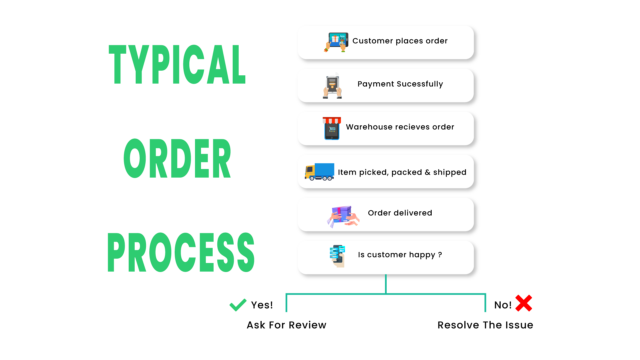Omni-Channel Marketing Or Sales Automation
Before going into the depth of omnichannel sales automation, let us give you a brief knowledge of what Omni-channel marketing/sales are all about.
“Omi-channel marketing” is becoming popular to marketers in the last few years especially in the e-commerce industry.
They approach the open market where all the brands coordinate with all the brands. Then present it to the potential customers both online as well as offline. Nowadays, customers are contacting multiple channels at the same time. The marketers must create a combined message or content for all the customers who are present across all the channels.
To enhance the buyer’s journey the companies must learn to automate the omnichannel strategies and switching to a truly multi-channel strategy. It is also called Omni-channel marketing.
More blogs on sales automation and related topics::
https://digitalwoods.net/en/blogOmni-channel Sales Automation
Whatever the product may be, the purchasing customer wants to experience smooth and uninterrupted browsing. Omni-channel marketing automation strategies follow the procedure of creating an equal presence in all the channels. It is understanding that the prospect might start the journey from one platform and land to other platforms when converting. The design should be in such a way that it interconnects to each other, flexible enough for the customers.
Omnichannel marketing is something different from multi-channel marketing.
In multi-channel, they sell the products in various possible channels with content attached to it. The product or brand may associate with multiple channels. But each of them operates singly as each channel is managed uniquely.
Talking about omnichannel marketing, it is more than multi-channel marketing. It focuses on creating a combined brand experience notwithstanding the channels present.
For example, if a customer is browsing a website for purchase but does not complete the transaction. The mobile app recognizes the person when the customer starts another purchase from another website after several days. He will be notified of the incomplete transaction he did previously.
In short, if your channels do not interconnect with one another and are unable to adapt the website or mobile actions according to the needs. Perhaps, it would not be omnichannel marketing rather it will be a multi-channel one.
Omnichannel marketing does provide all its customers with the required and relevant content across different channels. But it unifies with a single message without repeating.

Why Omni-channel sales automation is important?
Integrating the multiple channels to create omnichannel planning can be a little messy. So a smarter step is to automate omnichannel marketing. Through that, you can engage with millions of prospects across all the channels with very few operations to perform.
You must be wondering how to make this complicated process into a simple one?
Omnichannel marketing technology is the answer to this question. It allows you to run all the features of marketing strategy into a single platform right from the beginning to the execution of the sale. The omnichannel platform will allow you to generate marketing strategies according to your requirements like the first notification, welcome message to many more complicated programs.
Adding to the previous point, omnichannel automation generates programs that have emails, texts, social advertisements as well as other channels to increase your reach to the targeted customers. The marketers must always keep in mind that each of the channels should contain separate messages for the customers.
The omnichannel programs must include all possible channels that the customers are using nowadays like social media sites, email, mobile, etc. When they access those channels, they must convey different messages for various channels based on their nature.
It is very important to consider that the customer’s journey must remain linear.
When automating omnichannel marketing, the programs must be flexible and might be able to configure themselves to settle in any situation.
From a solo platform, different brands can nurture or engage with their potential prospects by contributing more channels to an existing one and address the phases where automation will be required most and would yield more results.
Wrap up
The percentage of purchasers is increasing day by day whether it is online or in a marketplace. According to a Nasdaq report, 95% of purchases are done online. A study done by IDC announced that customers shopping on multiple channels have a high lifetime value of more than 30%. Based on this information, marketers are bending towards omnichannel marketing automation.
These marketing strategies are aligned in such a way that the customer starts their journey from one channel and purchases in some other channel as we stated earlier in this content.
To increase the number of closing deals with customers, you need to place the products when and where the prospect searches for them.
Cross-channel marketing is almost similar to omnichannel marketing. How? Your answers are on the link:






